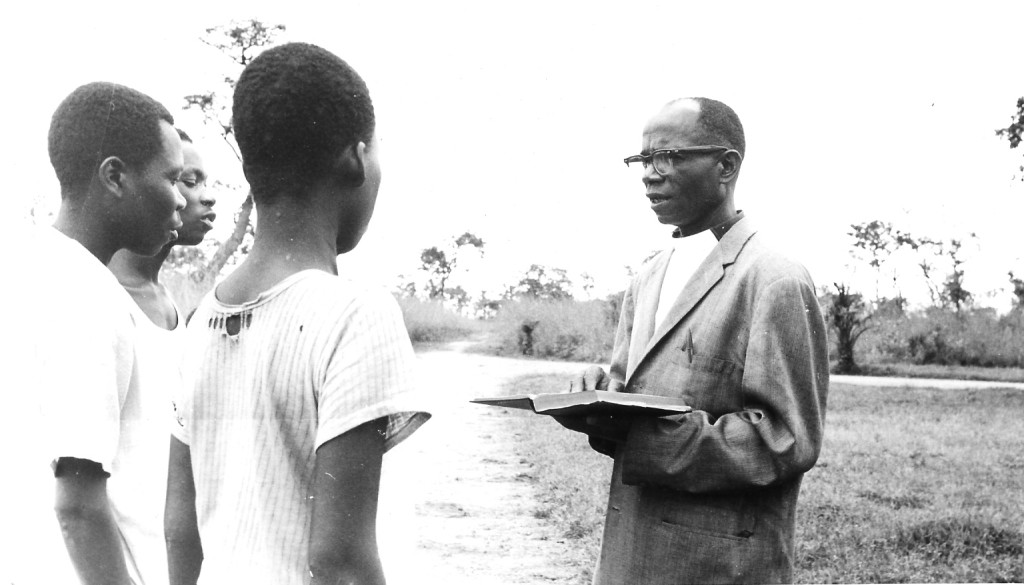
The following excerpt is taken from Jim Bertsche, “That’s all you can do to me,” in The Jesus Tribe: Grace stories from Congo’s Mennonites, 1912-2012 ed. Rod Hollinger-Janzen, Nancy Myers and Jim Bertsche (Elkhart, IN: Institute of Mennonite Studies, 2012): 71-72. Co-published with the Institute for the Study of Global Anabaptism.
The first warning Pastor Emmanuel Wayindama and his family had was the sound of excited shouting in the distance and the sight of shadowy figures leaping about, systematically setting fire to the thatch-covered homes of Bible Institute students.
Pastor Wayindama had been brought to Kandala in the fall of 1963 to serve on the teaching staff of the AIMM Bible Institute. An earlier graduate of the institute, he had demonstrated not only a keen mind but also a deep commitment to his Lord and to the church. When the search was on for Congolese to join the teaching staff at Kandala, Pastor Emmanuel Wayindama was an early choice.
The institute had been displaced from Tshikapa on the banks of the Kasai River some 100 miles to the east because of the tribal conflict that had erupted there after the hastily granted independence in 1960. Unfortunately, the move placed the institute in a territory where a different kind of unrest was brewing, in which missions were often a target.
On this violent night in January 1964 all along the Kwilu River both Catholic and Protestant mission posts were attacked. In the rebels’ view, missions had partnered with the hated Belgians and needed to be eliminated before the country could be reconstructed for the good of all. The young rebels declared, “We need to remove all traces of what was before so Moscow will come and help us rebuild our country.”
As rebels arrived at the small thatch-covered home of Pastor Wayindama and his wife and family managed to escape into the surrounding darkness but the pastor was intercepted.
“And who are you?” they asked him. “Are you also part of this school of foreigners that the missionaries brought here to Kandala?”
“Yes, I am a teacher at the Institute.”
“So you are not a student?” Pastor Wayindama was a small man. “Are you then a pastor?”
“Yes I am.”
“A pastor! That’s even worse.”
From that point on the interrogation was accompanied by a hail of blows, some with fists, some with the wooden arcs of the bows and arrows carried by each rebel. Pastor Wayindama was soon bloodied and beaten to his knees.
Then the rebel team leader leaned over and shouted into his face: “You know that I can kill you right here on this spot, don’t you?”
Pastor Wayindama looked into the eyes of his tormentor and through bloody, swollen lips replied: “Sure you can, but if you do, that’s all you can do to me!”
The rebel leader was speechless. He had fully expected to see the pastor grovel at his feet pleading for his life. For a long moment he stared at him, then turned and ordered his team elsewhere.
Pastor Wayindama lived to lead student families to safety across some 125 miles of dry, hot landscape, limping painfully all the way. His experience and witness are part of the precious legacy of the Mennonite Church of Congo.